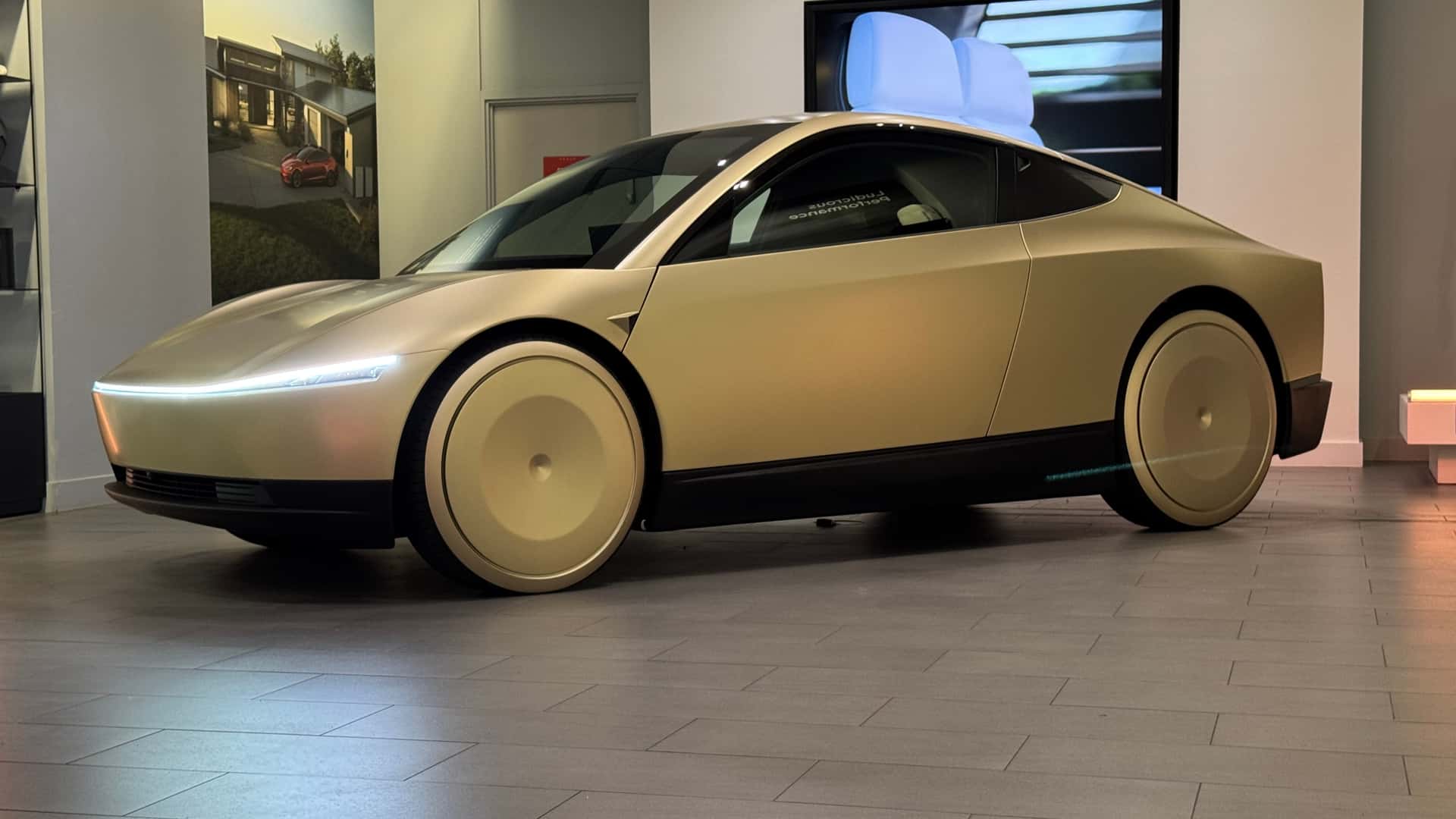
Nevertheless, Tesla asserts an impressive range figure.
- The Tesla Cybertruck will be arriving next year.
- Using a battery pack under 50 kWh, Tesla asserts they could achieve approximately 300 miles of range.
The Tesla Cybercab It could become the most efficient electric vehicle globally upon its release later this year. This was suggested by two executives from the EV company during a short chat with Sandy Munro, where they touched on several distinctive characteristics of the robotaxi.
Just as a reminder, the Tesla Cybertruck is a two-door, two-seat electric vehicle that lacks a steering wheel – instead, Tesla asserts it will have autonomous capabilities and can serve dual purposes as an individual conveyance tool and a driverless cab to generate income for its owner.
The Tesla Model Y stands as the brand's most compact SUV model featuring a rooftop design, engineered primarily for superior efficiency both in operation and production stages. According to Lars Moravy, Tesla’s vice president of vehicle engineering, this electric vehicle boasts an estimated top practical driving distance nearing 300 miles per complete battery recharge under typical usage conditions.
More Tesla Stories
- Tesla Insurance Costs Are Poised to Increase as Vehicles Turn into Targets for Vandals
- The Tesla Model 3 Performance Remains the Top Contender to Overtake
- Tesla's Budget-Friendly Electric Vehicle Set for Release This Year as Compact Version of Model Y: Report
- Tesla Used Car Values Have Plunged Dramatically
However, this number isn’t quite groundbreaking; the updated Model 3 Long Range boasts an Environmental Protection Agency (EPA) estimated range of 363 miles. What stands out instead is the battery size. According to Moravy, the Cybertruck will feature a battery pack under 50 kilowatt-hours. For reference, the Model 3 Long Range Rear-Wheel Drive comes with an approximate usable capacity of 75 kWh.
If accurate, this would lead to an actual efficiency of 6 miles per kilowatt-hour in the real world, which is remarkable. For comparison, the facelifted Model 3 , which stands among the most efficient electric vehicles available, has a rating of 4 miles per kilowatt-hour, whereas the Lucid Air boasts an efficiency of 4.3 miles per kWh. This means that the Tesla Cybercab would be 50% more efficient compared to the Model 3.
The vehicle's design and production methods greatly enhance efficiency. As stated by Franz von Holzhausen, Tesla’s Chief Designer, the tear-shaped body significantly contributes to lowering energy usage. Additionally, maintaining a lightweight structure is crucial for this improvement.
Although the executives declined to reveal the exact weight of the new two-door electric vehicle, they mentioned that its body is constructed using unpainted polyurethane sheets. During production, pigments are applied directly to these panels, ensuring that scratches won’t expose an underlying layer, thus reducing visibility of minor damages.
Actually, the car has minimal paint coverage, resulting in reduced production expenses and possibly lower repair fees should anything get damaged.
The two executives reaffirmed that the Tesla Cybertruck remains scheduled for a commercial release in 2026. Equipment for manufacturing is presently being set up at the Texas Gigafactory, with initial pre-production models anticipated to be produced this summer.
